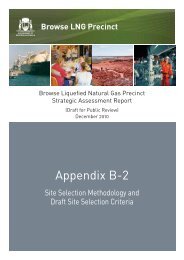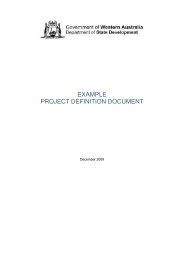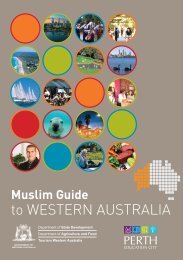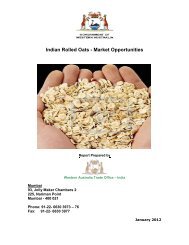Browse LNG Precinct - Public Information Booklet - Department of ...
Browse LNG Precinct - Public Information Booklet - Department of ...
Browse LNG Precinct - Public Information Booklet - Department of ...
You also want an ePaper? Increase the reach of your titles
YUMPU automatically turns print PDFs into web optimized ePapers that Google loves.
<strong>Public</strong> <strong>Information</strong> <strong>Booklet</strong><br />
Security personnel receive comprehensive training for their position and the locations in<br />
which the facilities operate. Their training highlights the need for appropriate, respectful<br />
interactions with all people they come into contact with.<br />
Security personnel are another layer <strong>of</strong> the health, safety and integrity process. Due to<br />
this, one <strong>of</strong> the facets to their responsibilities includes the safety <strong>of</strong> personnel which<br />
requires excellent communication skills and respect for local people and customs. As an<br />
integral part <strong>of</strong> this process, their duties are to ensure the security <strong>of</strong> the site and<br />
therefore to restrict access to unauthorised visitors which ensures the safety <strong>of</strong> all<br />
personnel. Industry are also open to receive any comments on how these duties are<br />
fulfilled and in the unlikely event <strong>of</strong> any problems. For example, Woodside have a robust<br />
system where issues can be raised with the site manager, independent <strong>of</strong> the security<br />
personnel.<br />
Question:<br />
What are the risks with the proposed <strong>LNG</strong> plant? How will the company deal with<br />
them?<br />
Management <strong>of</strong> risk is a key focus <strong>of</strong> the <strong>LNG</strong> industryís business. For example, to<br />
manage risk Woodside has a management process that considers a whole range <strong>of</strong> risks<br />
that occur in the industry. Risks can be classed in to many categories including: health<br />
and safety; environment; financial; reputation; legal; and social. Once a risk is identified it<br />
is assessed (based on the likelihood and consequence) and management measures put<br />
in place. The severity <strong>of</strong> the risk will determine who is responsible for the risk. The high<br />
level risks are presented to the Woodside Board for review.<br />
Question:<br />
Did the company have a fire last year and has Woodside had any safety incidents<br />
at its facilities?<br />
The State has consulted with Woodside on this question and can summarise the<br />
response as follows:<br />
Woodside has more than 20 years experience in <strong>LNG</strong> plant design and operations. The<br />
<strong>Browse</strong> project employs experienced specialist in <strong>LNG</strong> facility design and seeks the<br />
expertise <strong>of</strong> international contractors who have built <strong>LNG</strong> plants around the world.<br />
The health and safety <strong>of</strong> Woodsideís people comes first in all decisions and actions.<br />
Woodsideís goal is ìno one gets hurt, no incidentsî and the company aspires to be<br />
recognised, by their employees and peers, as an industry leader in the management <strong>of</strong><br />
health and safety.<br />
To achieve this outcome Woodside pursue three layers <strong>of</strong> protection to reduce the<br />
potential for injuries and incidents:<br />
� Plant ñ design, engineering hardware, control systems, physical layouts<br />
� Process ñ management systems and process to identify, control and mitigate risks<br />
and drive continuous operational improvement<br />
5279225 84









